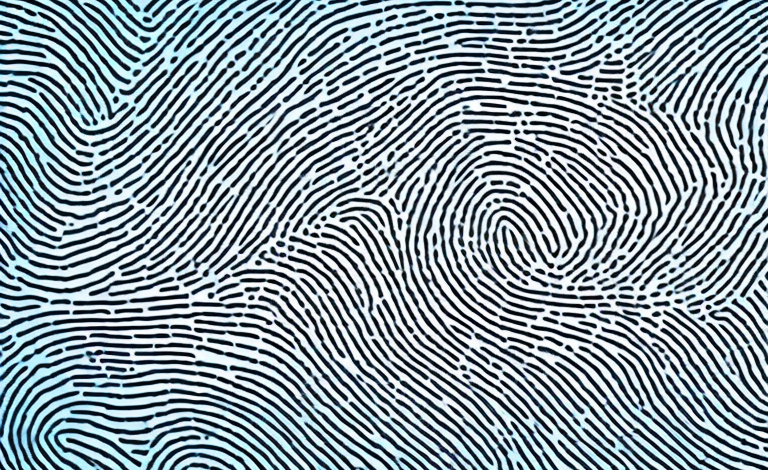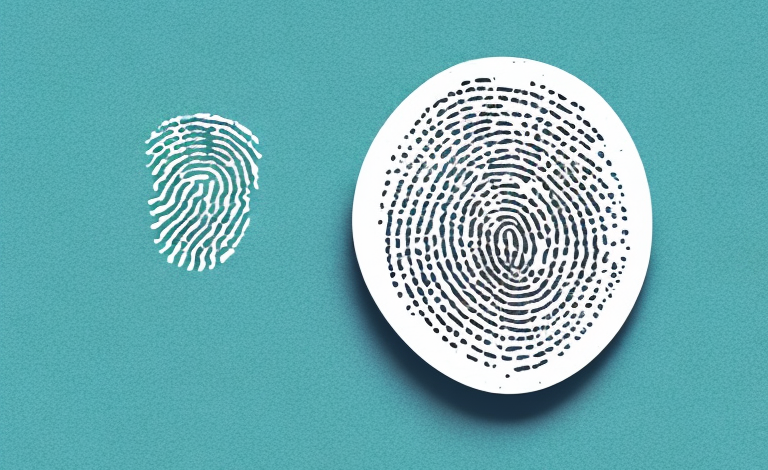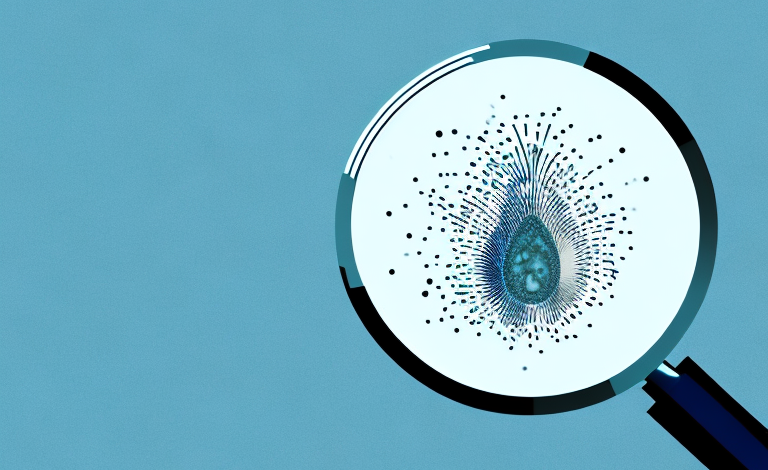Fingerprints have been used as a method of identification for over a century. They are unique to each individual and can provide valuable evidence in criminal investigations. But can fingerprints wear off over time?
Understanding the science behind fingerprints
Fingerprints are made up of ridges and valleys on the surface of the skin. These ridges are formed while a fetus is developing in the womb and stay the same throughout a person’s life. The pattern and structure of the ridges are unique to each individual, making fingerprints a reliable method of identification.
Forensic scientists use fingerprints to solve crimes by comparing the unique patterns found at a crime scene to those in a database of known prints. This process is called fingerprint analysis and has been used for over a century to identify suspects and link them to crimes.
While fingerprints are primarily used for identification purposes, they also serve other functions. The ridges and valleys on our fingertips help us grip objects and improve our sense of touch. In fact, some researchers believe that the unique patterns on our fingertips may have evolved to help us better manipulate tools and objects.
The importance of fingerprints in criminal investigations
Fingerprints have played a critical role in identifying suspects and solving crimes for over a century. They are often found at the scene of a crime and can provide valuable evidence in court. However, the durability of fingerprints can impact their usefulness as evidence.
Advancements in technology have allowed for more accurate and efficient analysis of fingerprints. Automated fingerprint identification systems (AFIS) can quickly compare fingerprints found at a crime scene to a database of known prints, greatly increasing the chances of identifying a suspect. Additionally, new techniques such as superglue fuming and laser detection have improved the ability to lift and analyze fingerprints from difficult surfaces.
Factors that can affect the wear and tear of fingerprints
There are several factors that can impact the wear and tear of fingerprints. One is age – as we get older, the elasticity and moisture in our skin decreases, which can lead to more wear and tear on our fingerprints. Manual labor can also have an impact, as can exposure to harsh chemicals or extreme temperatures.
How to properly care for your fingertips to preserve your fingerprints
While it is impossible to prevent all wear and tear on fingerprints, there are steps you can take to minimize damage. For example, keeping your hands moisturized and avoiding harsh chemicals can help preserve the integrity of your fingerprints.
In addition to moisturizing and avoiding harsh chemicals, it is also important to avoid excessive rubbing or scraping of your fingertips. This can cause the outer layer of skin to wear away, potentially damaging your fingerprints. Additionally, if you work in an industry that requires frequent hand washing or exposure to water, it is important to dry your hands thoroughly to prevent the skin from becoming waterlogged and potentially causing damage to your fingerprints.
The role of genetics in determining fingerprint durability
Genetics can also play a role in determining the durability of fingerprints. Some people may be more likely to experience wear and tear on their fingerprints due to genetic factors.
Research has shown that certain genetic variations can affect the thickness and elasticity of the skin on our fingertips, which can impact the durability of our fingerprints. For example, a study conducted by the University of Leicester found that individuals with a specific genetic variation in the gene LCE6A were more likely to have thinner skin on their fingertips, making their fingerprints more susceptible to damage.
The impact of age on fingerprint integrity
As mentioned earlier, age can have an impact on the durability of fingerprints. As we get older, our skin becomes less elastic and less able to provide the same amount of detail in our fingerprints as it used to.
However, it is important to note that the impact of age on fingerprint integrity varies from person to person. Some individuals may maintain clear and distinct fingerprints well into their old age, while others may experience a decline in fingerprint quality at a younger age.
Additionally, certain factors such as exposure to chemicals, frequent hand washing, and certain medical conditions can also affect the durability and clarity of fingerprints, regardless of age. Therefore, it is important for forensic experts to consider all possible factors when analyzing fingerprints as evidence in criminal investigations.
The effects of manual labor on fingerprints
Manual labor can also have an impact on fingerprint durability. People who work with their hands often and are exposed to harsh chemicals may experience more wear and tear on their fingerprints than others.
Additionally, individuals who engage in manual labor that involves repetitive motions, such as using a hammer or screwdriver, may also experience changes in their fingerprints over time. The constant pressure and friction on the fingertips can cause the ridges to flatten or become less defined.
However, it is important to note that while manual labor can affect the durability and appearance of fingerprints, it does not necessarily make them unidentifiable. Forensic experts are trained to analyze even the most damaged fingerprints and can often still use them to identify individuals.
The difference between permanent and temporary loss of fingerprints
While fingerprints can experience wear and tear, it’s important to note that there is a difference between permanent and temporary loss of fingerprints. Permanent loss can occur due to scarring or certain medical conditions.
On the other hand, temporary loss of fingerprints can occur due to various reasons such as excessive sweating, exposure to extreme temperatures, or prolonged immersion in water. In such cases, the ridges on the fingertips become swollen and the prints become difficult to read. However, temporary loss of fingerprints is usually reversible and the prints can be restored after a few days of rest and recovery.
Challenges in identifying individuals with worn off fingerprints
Identifying individuals with worn off fingerprints can be challenging in criminal investigations. However, there are still other methods of identification available, such as DNA analysis or facial recognition technology.
One of the main challenges in identifying individuals with worn off fingerprints is that it can be difficult to obtain a clear set of prints. This is especially true if the individual has been working with their hands or has been in contact with abrasive materials. In some cases, investigators may need to rely on other forms of evidence, such as witness testimony or surveillance footage, to identify a suspect.
Another challenge is that some individuals may intentionally alter their fingerprints in order to avoid detection. This can include using chemicals or abrasives to remove the ridges on their fingertips, or even undergoing surgery to alter the appearance of their hands. In these cases, investigators may need to rely on other forms of identification, such as dental records or DNA analysis, to positively identify a suspect.
Advances in fingerprint technology and its implications for investigation
Fingerprint technology has come a long way in recent years. Advances such as live-scan and digital capture technology have made it easier to identify and analyze fingerprints. This technology can provide detailed information about a person’s fingerprints, such as the number of ridges and the distance between them, making it easier to identify suspects and solve crimes.
Another significant advancement in fingerprint technology is the use of chemical treatments to enhance the visibility of latent fingerprints. These treatments can reveal fingerprints that were previously invisible to the naked eye, providing investigators with more evidence to work with. Additionally, new software programs have been developed to help analyze and compare fingerprints more efficiently, reducing the time and effort required to match prints to a suspect.
However, as with any technology, there are also potential drawbacks to consider. One concern is the possibility of false positives or false negatives in fingerprint analysis. It is important for investigators to be aware of the limitations of the technology and to use it in conjunction with other evidence and investigative techniques. Additionally, there are privacy concerns related to the collection and storage of fingerprint data, which must be carefully managed to protect individuals’ rights.
Legal implications of altered or missing fingerprints
In cases where a suspect’s fingerprints are altered or missing, it can have legal implications. The evidence may be less reliable or inadmissible in court, which can impact the outcome of a trial.
Furthermore, altered or missing fingerprints can also lead to wrongful accusations and convictions. If a suspect’s fingerprints are not properly identified or analyzed, it can result in the wrong person being charged with a crime. This can have devastating consequences for the innocent individual and their loved ones.
Additionally, altered or missing fingerprints can pose a challenge for law enforcement agencies in identifying and apprehending suspects. Without reliable fingerprint evidence, investigators may have to rely on other forms of evidence, such as DNA or eyewitness testimony, which may not be as conclusive or accurate.
Debunking common myths about fingerprints wearing off over time
There are several myths surrounding fingerprints, including the idea that they can wear off over time. However, this is not entirely accurate. While wear and tear can occur, fingerprints do not simply disappear over time.
One reason why fingerprints may appear to wear off over time is due to natural skin shedding. As our skin regenerates, the outermost layer of skin cells, which contains our fingerprints, is shed and replaced with new cells. This process can cause fingerprints to become less defined, but they do not completely disappear.
Another common misconception is that wearing gloves can prevent fingerprints from being left behind at a crime scene. However, this is not always the case. Gloves can leave behind their own unique pattern of ridges and valleys, known as glove prints, which can be just as incriminating as fingerprints.
Pros and cons of using alternative biometric identification methods
While fingerprints remain an important method of identification, there are also other biometric identifiers available, such as facial recognition or iris scans. Each method has its own pros and cons, and it’s up to investigators to determine which method is most appropriate for each situation.
Facial recognition technology has become increasingly popular in recent years, with many law enforcement agencies using it to identify suspects. One advantage of facial recognition is that it can be done from a distance, without the need for physical contact with the individual being identified. However, there are concerns about the accuracy of facial recognition, particularly when it comes to identifying people of color or those with facial abnormalities.
Iris scans are another alternative biometric identification method that is gaining popularity. This method involves scanning the unique patterns in a person’s iris to identify them. One advantage of iris scans is that they are highly accurate and difficult to fake. However, the equipment required for iris scans can be expensive, and the process can be time-consuming, making it less practical for certain situations.
Conclusion: What we know and what we still need to find out about the durability of fingerprints
While we know that fingerprints can experience wear and tear over time, there is still much we don’t know about the durability of fingerprints. Further research is needed to determine the impact of genetics, age, and other factors on the integrity of fingerprints. However, advances in technology and alternative biometric methods mean that investigators have more tools at their disposal than ever before.



